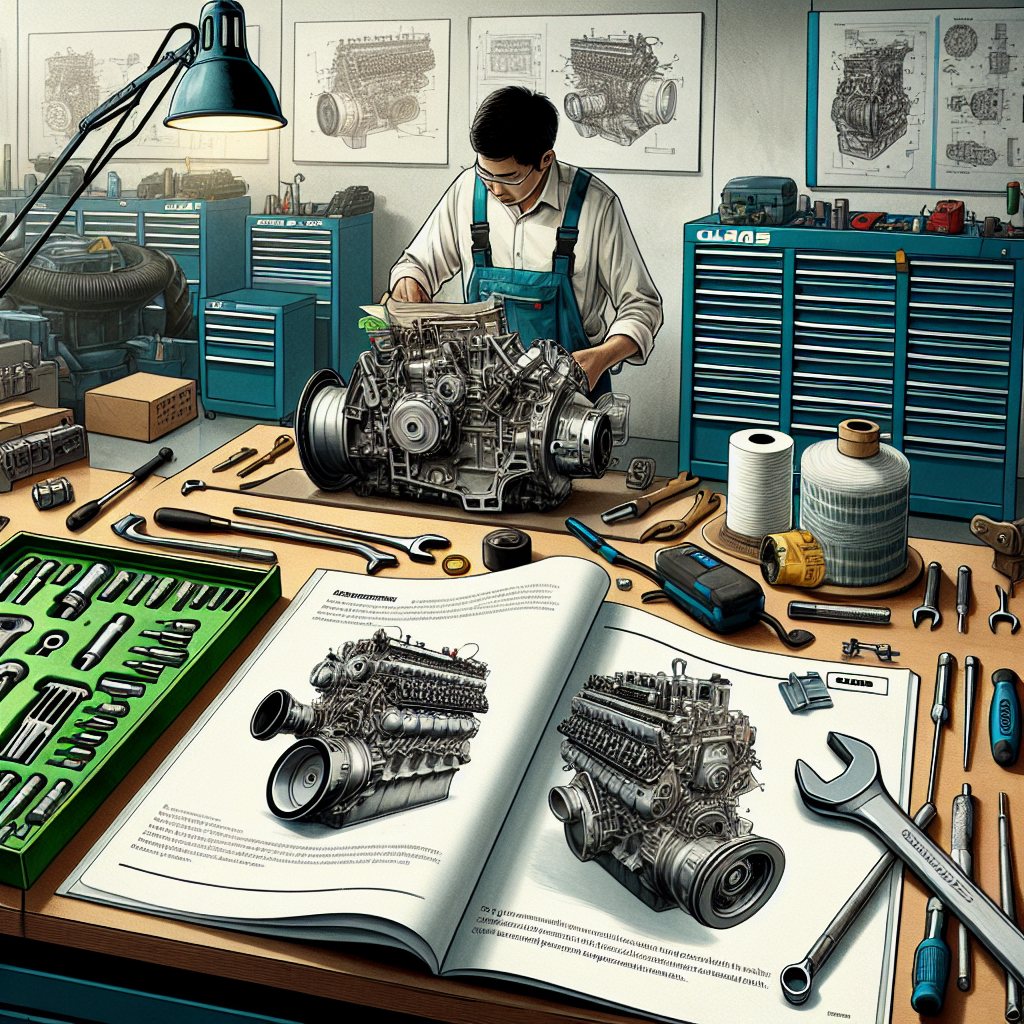Your cart is currently empty!

Essential Guide to Repairing and Overhauling CLAAS Engines
Repairing and overhauling CLAAS engines is a task that demands precision, expertise, and adherence to manufacturer guidelines. CLAAS, a renowned name in the agricultural machinery industry, provides detailed manuals and guidance to ensure that their engines are serviced correctly. This article will discuss the importance of following manufacturer guidelines, the tools and equipment recommended by CLAAS, step-by-step engine repair procedures, and common pitfalls and how to avoid them. For more detailed information, visit CLAAS Manuals.
Importance of Following Manufacturer Guidelines
Adhering to manufacturer guidelines is paramount when repairing and overhauling CLAAS engines. These guidelines are meticulously crafted by the experts who designed and built the engines, ensuring that every aspect of the repair process is covered. Ignoring these instructions can lead to suboptimal performance or even catastrophic engine failure.
Manufacturer guidelines provide a standardized approach to repairs, which is crucial for maintaining the integrity and reliability of the engine. Following these guidelines ensures that all components are compatible and that the engine operates as intended. This is particularly important for complex machinery like CLAAS engines, where even minor deviations can have significant repercussions.
Furthermore, adhering to manufacturer guidelines can safeguard the warranty of the engine. Many manufacturers, including CLAAS, require that repairs and overhauls be conducted according to their specifications to honor warranty claims. Deviating from these guidelines can void the warranty, leading to additional expenses for the owner.
Manufacturer guidelines also include safety protocols that are essential for protecting the technician and the machinery. These protocols are designed to prevent accidents and injuries during the repair process. Ignoring these safety measures can result in serious harm or damage.
Lastly, following manufacturer guidelines can enhance the longevity and efficiency of the engine. Properly maintained engines are less likely to experience breakdowns and can operate more efficiently, saving time and money in the long run. For comprehensive manuals and guidelines, visit CLAAS Manuals.
Tools and Equipment Recommended by CLAAS
Using the right tools and equipment is crucial for the successful repair and overhaul of CLAAS engines. CLAAS provides a list of recommended tools that are specifically designed for their engines, ensuring that each component is handled correctly. These tools are essential for achieving precision and avoiding damage during the repair process.
Specialized diagnostic tools are among the most important equipment recommended by CLAAS. These tools can identify issues that are not visible to the naked eye, allowing technicians to address problems accurately and efficiently. Using generic diagnostic tools can result in incorrect diagnoses and ineffective repairs.
CLAAS also recommends specific wrenches, sockets, and screwdrivers that are designed to fit the unique components of their engines. Using the wrong size or type of tool can strip bolts, damage threads, and compromise the integrity of the engine. The recommended tools ensure that each part is handled with care and precision.
Torque wrenches are another essential tool recommended by CLAAS. These wrenches allow technicians to apply the correct amount of torque to bolts and nuts, preventing over-tightening or under-tightening. Proper torque is critical for maintaining the structural integrity of the engine and preventing leaks or failures.
Additionally, CLAAS suggests the use of lifting and support equipment designed for their engines. These tools ensure that heavy components are handled safely and securely, reducing the risk of accidents and injuries. Proper lifting equipment also prevents damage to the engine during the repair process.
For those looking to invest in the recommended tools and equipment, detailed information and purchase options can be found in the CLAAS Manuals. These manuals provide comprehensive lists and specifications to ensure that technicians are well-equipped for any repair or overhaul task.
Step-by-Step Engine Repair Procedures
Repairing and overhauling a CLAAS engine involves a series of detailed steps that must be followed meticulously. The first step is to consult the specific repair manual for the engine model being serviced. These manuals provide a comprehensive guide to the entire process, from disassembly to reassembly. Access these manuals at CLAAS Manuals.
The initial phase of the repair process involves a thorough inspection of the engine. This includes checking for visible signs of wear and tear, leaks, and other issues. Diagnostic tools recommended by CLAAS should be used to identify any underlying problems that are not immediately apparent. This step is crucial for developing an accurate repair plan.
Next, the engine should be carefully disassembled according to the guidelines provided by CLAAS. This involves removing various components in a specific order to avoid damage and ensure that each part is accessible. It is important to label and organize each component to facilitate the reassembly process.
Once the engine is disassembled, each component should be cleaned and inspected for damage. Worn or damaged parts should be replaced with genuine CLAAS parts to ensure compatibility and reliability. The cleaning process is essential for removing contaminants that can affect the performance of the engine.
Reassembly is the next critical step in the repair process. This should be done in the reverse order of disassembly, following the specific instructions provided by CLAAS. Proper torque specifications must be adhered to, using torque wrenches recommended by CLAAS. This ensures that each component is securely and correctly installed.
Finally, the engine should be tested to ensure that it operates correctly. This involves running the engine and checking for any issues such as leaks, unusual noises, or performance problems. Any issues should be addressed immediately, following the troubleshooting guidelines provided by CLAAS. For detailed procedures, refer to the CLAAS Manuals.
Common Pitfalls and How to Avoid Them
Repairing and overhauling CLAAS engines can be fraught with challenges, but many common pitfalls can be avoided with proper knowledge and preparation. One of the most frequent mistakes is ignoring the manufacturer guidelines. As emphasized earlier, these guidelines are crucial for ensuring the correct and safe repair of the engine.
Another common pitfall is using incorrect or substandard tools. The tools recommended by CLAAS are designed specifically for their engines, and using generic tools can result in damage to components and improper repairs. Investing in the right tools, as listed in the CLAAS Manuals, is essential for successful repairs.
Inadequate cleaning of components is another issue that can lead to problems. Contaminants such as dirt, oil, and metal shavings can affect the performance and longevity of the engine. Thorough cleaning of each component during the disassembly process is crucial for preventing these issues.
Failure to replace worn or damaged parts is a common mistake that can lead to further engine problems. It is important to inspect each component carefully and replace any parts that show signs of wear or damage. Using genuine CLAAS parts ensures compatibility and reliability.
Improper reassembly is another frequent pitfall. Following the specific reassembly order and torque specifications provided by CLAAS is essential for ensuring that the engine operates correctly. Skipping steps or using incorrect torque can result in leaks, component failures, and other issues.
Finally, neglecting to test the engine after reassembly can lead to undetected problems. Running the engine and conducting thorough tests can identify any issues that need to be addressed before the engine is put back into service. For comprehensive troubleshooting guidelines, refer to the CLAAS Manuals.
Repairing and overhauling CLAAS engines is a complex task that requires adherence to manufacturer guidelines, the use of recommended tools, and meticulous attention to detail. By following the procedures outlined in the CLAAS manuals and avoiding common pitfalls, technicians can ensure that these engines operate efficiently and reliably. For more detailed information and guidance, visit CLAAS Manuals.
